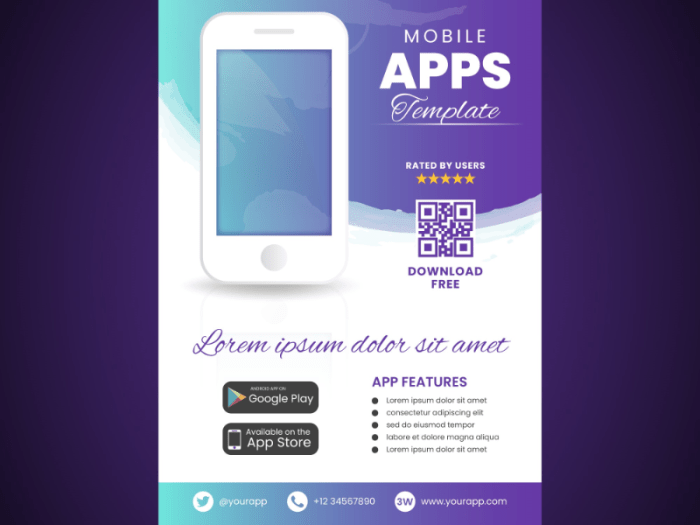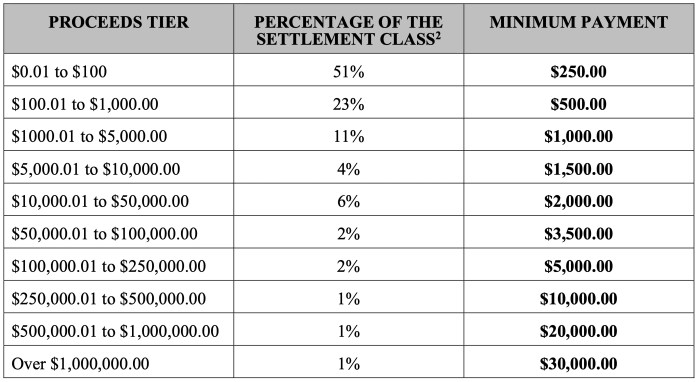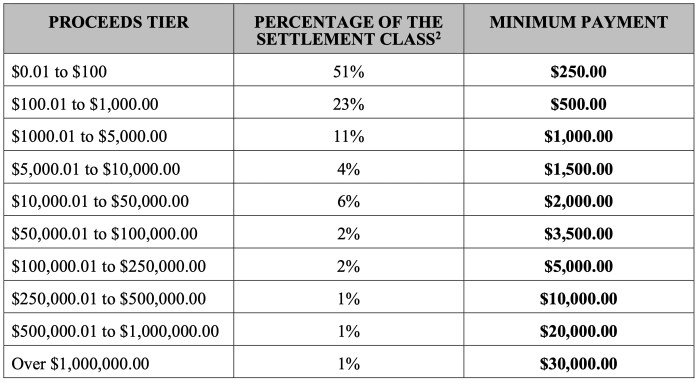Apple updates app store rules to allow developers more communication with customers, opening up a new era of direct interaction between creators and users. This shift marks a significant change in how developers can connect with their audience, moving beyond the previous limitations. It’s a fascinating evolution, potentially boosting customer satisfaction and app engagement.
Previously, Apple’s App Store rules restricted the types of communication developers could have with their customers. This often led to frustration on both sides. The updated rules, however, are designed to encourage more open dialogue, allowing for a richer and more personalized customer experience. The new policies also address how developers can reach out to their audience in ways that were previously off-limits.
Background of Apple’s App Store Rules
Apple’s App Store, a vital platform for app developers, has always maintained strict guidelines to ensure a safe and reliable user experience. Central to these guidelines are rules governing developer-customer communication. Historically, these rules have evolved, reflecting Apple’s commitment to maintaining the App Store’s integrity and user trust. The recent updates to these rules represent a significant shift in the relationship between developers and their user base.
Previous Communication Restrictions for Developers
Prior to the recent changes, Apple’s App Store policies placed significant limitations on how developers could interact with their customers. These restrictions aimed to prevent spam, misleading information, and other forms of abuse. However, these policies often created a communication gap between developers and their user base, potentially hindering the growth of apps and the user experience. The restrictions encompassed various communication channels, impacting both direct outreach and indirect promotion.
Historical Context of Apple’s App Store Policies
Apple’s App Store policies have always prioritized user safety and app quality. The policies have evolved over time to adapt to changing technological landscapes and user expectations. Early policies focused primarily on preventing malicious software and fraud. Later, they expanded to address deceptive practices and misleading advertising. These policies aimed to create a platform where users could trust the apps they downloaded, and the communication restrictions were part of that broader strategy.
Summary of Key Changes in Updated Rules
The recent update to Apple’s App Store rules relaxes restrictions on developer-customer communication. This shift allows for more proactive and informative outreach to users, without compromising user trust or safety. The key change involves a broadening of acceptable communication methods. This allows developers to inform users about app updates, new features, or promotions in ways that were previously prohibited.
Specific Types of Communication Now Permitted
The updated rules permit developers to use a wider range of communication channels to engage with users. These channels include, but are not limited to, email newsletters, in-app notifications, and targeted advertisements. This flexibility allows developers to deliver valuable information directly to their user base, fostering a more engaged and informed user community.
Examples of Acceptable and Unacceptable Communication Methods Under the Old Rules
Under the previous rules, a developer sending out mass emails to users to promote a new feature was likely considered inappropriate. Similarly, using push notifications to bombard users with promotional messages was frowned upon. In contrast, communicating about bug fixes or crucial security updates via in-app messages would have been acceptable.
Apple’s recent app store rule changes are pretty cool, letting developers connect better with customers. This is a positive step, but it’s also interesting to consider how this relates to the recent Amazon Ring Always Home Cam flying drone ad demo, showcasing a futuristic approach to home security. Perhaps these innovative, forward-thinking companies are recognizing the need for improved communication channels to help customers understand complex new technologies like those demonstrated in the amazon ring always home cam flying drone ad demo.
Ultimately, these updates highlight a growing need for clearer communication between tech companies and their user base, especially as products become more intricate and complex.
Potential Impact of Updated Rules on App Development Strategies
The updated rules could significantly impact app development strategies. Developers can now use targeted marketing strategies to engage users more effectively. This could result in increased user engagement, higher app downloads, and greater revenue generation. The ability to inform users about updates and new features directly will likely enhance the user experience and promote app loyalty.
Impact on Developer-Customer Communication

Apple’s App Store, a vital platform for developers and users, has always emphasized user safety and app quality. However, recent updates to the App Store rules aim to foster more transparent and direct communication between developers and their user base. This shift reflects a growing recognition of the importance of developer-customer interaction in the app ecosystem.
Comparison of Old and New Communication Policies
The previous App Store guidelines often limited the types of direct communication developers could have with their users. This frequently meant that developers had limited avenues to inform users about critical updates, bug fixes, or new features. The new rules, in contrast, are designed to promote better communication, leading to a more satisfying user experience.
| Feature | Old Policy | New Policy |
|---|---|---|
| Example 1: Addressing User Feedback | Developers were often restricted in directly responding to user reviews, limiting the opportunity for addressing concerns or providing updates. | Developers can now respond to user reviews, offering clarifications, solutions, or updates regarding their app. |
| Example 2: Announcing Updates | Informing users about significant app updates or new releases was often limited to in-app notifications, which may not reach all users. | Developers can now use various communication channels to notify users about updates, including in-app messages, email, or social media. |
| Example 3: Providing Support | Direct support channels were often unavailable, forcing users to rely on generic support documentation or community forums. | Developers can now create dedicated support channels, like email addresses or in-app support options, to directly engage with users. |
Impact on Developer-Customer Interactions
The new communication policies allow developers to build stronger relationships with their users. Developers can now directly address concerns, provide more personalized support, and proactively inform users about crucial app updates. This personalized approach is more likely to lead to user retention and positive feedback.
Potential Benefits for Developers
The enhanced communication policies offer several benefits for developers. First, they can directly respond to user feedback, which is crucial for improving app quality and user satisfaction. Second, developers can communicate more proactively about updates and new features, increasing engagement. Furthermore, improved communication can lead to a higher retention rate, as users feel more connected to the developer and their app.
Advantages and Disadvantages for Customers
The new policies provide several advantages to customers. For example, users will receive more accurate information about app updates and bug fixes, allowing them to promptly resolve issues. They can also receive personalized support, ensuring a smoother experience. However, customers might experience a deluge of communications if developers are not mindful of their users’ preferences.
Potential Implications for App Store Ecosystems
The shift in communication policies has the potential to reshape the App Store ecosystem. Increased transparency and communication can lead to a higher quality of apps, more engaged users, and a more positive overall user experience. It can also incentivize developers to prioritize customer feedback and communication, creating a more dynamic and responsive ecosystem.
Ways Developers Can Improve Communication
Developers can leverage various channels to enhance communication with customers. Utilizing in-app messaging, offering dedicated support email addresses, and participating in community forums can improve user engagement and provide support channels. Maintaining a consistent communication style is also crucial for maintaining user trust and loyalty.
- In-app messaging: Developers can utilize in-app messaging to announce updates, provide helpful tips, and address user concerns. This approach allows for direct communication within the app itself, enhancing user experience.
- Dedicated support email: A dedicated support email address allows users to directly contact the developer with specific questions or issues. This creates a more personal and responsive support system.
- Community forums or social media: Utilizing community forums or social media platforms allows developers to engage with a wider audience, foster a sense of community, and provide timely responses to user feedback.
Strategies for Developers
Apple’s recent updates to App Store rules open up exciting new avenues for developers to connect with their user base. This shift allows for more direct communication, fostering stronger relationships and ultimately, a more positive user experience. Developers can leverage these changes to not only inform users about updates and features but also gather valuable feedback that can shape the future of their apps.This section delves into practical strategies for developers to effectively communicate with customers under the revised App Store guidelines.
Apple’s recent app store rule updates are great news for developers, giving them more freedom to connect with customers directly. This is a positive step, but it’s interesting to see how other platforms are responding. For example, Huawei is offering incentives to developers who build their app store early, like huawei will pay developers more if they build its app store early.
Ultimately, these moves by both companies signal a broader trend toward more developer-friendly app store policies, which is ultimately good for consumers.
It provides actionable steps, real-world examples, and methods for measuring success, ultimately equipping developers with the tools to maximize the benefits of improved developer-customer interaction.
Actionable Communication Strategies
Developers can utilize various communication channels to enhance engagement and transparency. Direct communication, whether through in-app messages, newsletters, or dedicated support channels, is crucial. Building trust through clear and consistent communication is key.
Apple’s recent update to app store rules, allowing developers more direct communication with customers, is a positive step. It’s interesting to consider how this might impact the current landscape, particularly given the recent controversies surrounding companies like SpaceX and Elon Musk, with the spacex elon musk sexual harassment lawsuit highlighting the importance of open communication. Ultimately, these changes could lead to a more transparent and responsive relationship between developers and their user base, a significant shift in the app ecosystem.
- In-App Messaging: Using in-app messages for updates, feature announcements, or important notices allows for direct interaction with users within the context of the app. This method is highly effective because users are already engaged within the app, increasing the likelihood of interaction and engagement with the message. For example, a game developer could announce a new level or a critical bug fix using an in-app notification.
- Dedicated Support Channels: Creating easily accessible channels like dedicated email addresses, in-app support centers, or forums can facilitate rapid response to user queries and issues. This is particularly useful for resolving technical problems or addressing specific user concerns promptly. For example, a productivity app could include a dedicated FAQ section within the app, guiding users towards solutions to common problems.
- Regular Newsletters: Providing users with periodic newsletters or updates via email or in-app notifications keeps them informed about new features, improvements, and important announcements. This method helps maintain engagement and builds a sense of community around the app. A social media app, for example, could share tips on using its platform or highlight user-generated content.
- Community Forums/Social Media: Engaging with users on social media or dedicated community forums allows for direct feedback and open discussion. Active participation in these platforms demonstrates a commitment to user engagement and builds trust. For example, a photo-editing app could host a dedicated forum for users to share their work, ask questions, and receive feedback from other users.
Effective Communication Strategies: Examples
Effective communication requires clarity, conciseness, and a proactive approach. The examples below highlight strategies that build trust and engagement.
- Transparency about App Updates: Communicating planned updates, feature additions, and bug fixes proactively through in-app messages or newsletters builds trust and anticipation. A calendar app, for instance, could inform users about planned improvements to its scheduling algorithms.
- Prompt Responses to User Feedback: Actively acknowledging and responding to user feedback, whether positive or negative, shows developers value user input. This is crucial for building a loyal user base. A mobile banking app, for example, might respond to user suggestions for better navigation or security features.
- Proactive Problem Solving: Anticipating potential issues and providing solutions or workarounds before users encounter problems demonstrates a commitment to user satisfaction. A music streaming app could send users information about potential connectivity issues before they arise.
Measuring Communication Effectiveness
Tracking key metrics can gauge the success of communication strategies. Analyzing user engagement, app ratings, and support ticket volume provides valuable insights.
- Tracking User Engagement: Monitoring metrics such as app usage, in-app message open rates, and time spent interacting with support channels provides insights into user engagement with communication efforts. For example, if in-app message open rates are low, it might indicate a need to adjust the messaging strategy.
- Analyzing App Ratings and Reviews: Monitoring app ratings and reviews can reveal user satisfaction with communication efforts. Negative reviews related to a lack of clarity or responsiveness might highlight areas needing improvement. For example, a consistently low rating might indicate a need to enhance the user support channels.
- Evaluating Support Ticket Volume: Monitoring the volume of support tickets related to specific communication strategies can identify areas where improvements are needed. If a surge in support tickets follows a particular announcement, it may signal the need for clearer instructions or additional support channels.
Creating a Communication Plan, Apple updates app store rules to allow developers more communication with customers
A well-defined communication plan is essential for consistent and effective engagement. This plan should Artikel communication channels, frequency, and content strategy.
- Identifying Target Audience: Understanding the target audience’s needs and preferences is crucial for tailoring communication to resonate with them. This ensures that the message is clear, concise, and effectively addresses the target audience’s specific needs.
- Defining Communication Goals: Setting clear objectives for communication efforts, such as increasing user engagement or improving app ratings, provides a framework for measuring success. This enables developers to create measurable goals.
- Choosing Appropriate Communication Channels: Selecting the most effective communication channels for specific messages is essential for optimal impact. This depends on the type of message and the preferences of the target audience.
Potential Challenges and Opportunities: Apple Updates App Store Rules To Allow Developers More Communication With Customers
Apple’s updated App Store rules, aimed at fostering better developer-customer communication, present both exciting opportunities and potential pitfalls. Developers now have more leeway to engage directly with users, but navigating the new guidelines requires careful consideration. The changes will undoubtedly reshape the app ecosystem, influencing how apps are discovered, monetized, and ultimately, perceived by users.These new rules, while designed to benefit both developers and users, introduce a new layer of complexity.
Developers need to understand the nuances of the updated guidelines to avoid any potential misinterpretations and penalties. Successful adaptation will depend on proactive planning, clear communication strategies, and a keen understanding of user expectations.
Potential Challenges for Developers
The transition to more open communication isn’t without its challenges. Developers might struggle with maintaining consistency across various communication channels. Balancing the need to engage with users while adhering to Apple’s strict guidelines on promoting apps can be difficult. Understanding and complying with the revised guidelines, including those related to in-app messaging and marketing strategies, requires careful study and adherence to the precise wording of the rules.
- Maintaining Transparency: Developers need to ensure all communication is accurate, transparent, and aligns with the app’s intended purpose. Deviations from this principle can result in app rejection or user distrust.
- Managing User Expectations: Direct communication can raise user expectations. Developers must ensure they can meet these expectations with consistent quality and timely responses.
- Balancing Promotion and Information: Developers must avoid using promotional language when providing information about app features. This is crucial for maintaining user trust and avoiding violations of the updated guidelines.
- Adapting to New Tools and Platforms: Developers might need to learn new tools and platforms to manage customer communication effectively.
Potential Opportunities for Developers
The new rules open up avenues for enhancing app offerings and fostering stronger developer-user relationships.
- Improved User Engagement: Direct communication allows developers to address user concerns, provide timely support, and gather feedback to enhance their app offerings.
- Enhanced App Discoverability: By engaging with users proactively, developers can build stronger communities around their apps, increasing discoverability and organic growth.
- Building Stronger User Relationships: More direct interaction allows developers to build stronger relationships with users, which can lead to increased user loyalty and advocacy.
- Gathering Valuable Feedback: Direct communication allows developers to receive more direct and nuanced feedback from users, enabling them to make improvements and address issues proactively.
Impact on App Discoverability
Enhanced communication could lead to increased app discoverability. Developers can utilize new communication channels to highlight app updates, improvements, and new features, thus attracting more users. This approach, when combined with appropriate marketing strategies, can lead to greater app visibility. Furthermore, improved user engagement and feedback can contribute to higher app rankings and greater visibility within the App Store.
Impact on App Monetization Strategies
The potential impact on app monetization strategies is multifaceted. Improved user engagement and relationships can lead to increased in-app purchases and subscriptions. Effective communication about pricing plans and value propositions can enhance conversion rates.
Impact on User Reviews
Increased communication could lead to more constructive user reviews. Developers who proactively address user concerns and provide support through direct communication may see more positive reviews and reduced negative feedback. Proactive engagement can help to mitigate negative experiences and encourage more constructive feedback.
Potential Issues with the New Rules
The new rules, while offering potential benefits, may present certain issues. The ambiguity of certain guidelines might lead to misinterpretations and potential violations. Developers might find it challenging to comply with all the new requirements, potentially leading to misunderstandings. In addition, maintaining consistency across various communication channels and platforms might prove difficult.
Future Implications

The recent updates to Apple’s App Store rules regarding developer-customer communication represent a significant shift in the app ecosystem. This shift, while intended to improve transparency and user experience, will undoubtedly have far-reaching consequences for the future of app development and the app store itself. The long-term impact will depend on how developers and users adapt to the new guidelines and how Apple itself manages the evolving landscape.The updated policies are likely to foster a more dynamic and engaging relationship between developers and their users.
This evolution, however, may also present new challenges, and the potential for litigation or future policy adjustments should not be overlooked. The key to a successful future lies in a careful balance between providing valuable communication channels and avoiding the pitfalls of spam or misleading information.
Long-Term Consequences of Updated Policies
The updated policies will likely lead to more direct communication between developers and users. This increased interaction could result in improved customer support, faster bug fixes, and more opportunities for user feedback. Conversely, the potential for increased marketing efforts and targeted advertising could also present challenges for maintaining user trust and avoiding a cluttered or overwhelming experience.
Potential Future Developments in App Store Communication Policies
Apple may further refine its guidelines to address specific concerns. These future adjustments could include stricter limitations on promotional offers, or enhanced moderation of user reviews and comments. The company might also explore more sophisticated tools for verifying developer identities and ensuring the authenticity of communication channels. These changes would aim to maintain the integrity and safety of the App Store while encouraging effective communication.
Scenarios for How the New Rules Will Influence the App Market
The app market could experience a transformation in how developers engage with their user base. Smaller developers might find it easier to connect with their audiences, while larger companies could use this improved communication to enhance brand loyalty and product awareness. Alternatively, the new policies could level the playing field, allowing independent developers to compete more effectively with established players.
The effect on app downloads and revenue generation is also a significant factor to consider.
Potential Areas of Future Conflict or Litigation
Potential conflicts could arise if developers feel the updated policies unfairly restrict their ability to communicate with users. This could lead to legal challenges related to freedom of speech or the right to promote products. Another area of contention could arise from differing interpretations of the rules, or if developers perceive them as overly burdensome. Such conflicts will likely be resolved through legal processes and court rulings.
Potential Future Enhancements to App Store Policies
Future enhancements to the App Store’s policies could include the introduction of standardized communication templates, or features that automatically flag potentially misleading or inappropriate messages. The integration of user-feedback mechanisms and the development of more advanced moderation tools could also help ensure a smoother user experience and a more equitable environment for developers. Additionally, the ability to filter or prioritize specific communication types (e.g., bug reports, feature requests) could prove valuable.
Final Wrap-Up
In conclusion, Apple’s updated app store rules represent a significant step towards a more dynamic and engaging app ecosystem. The increased communication options provide developers with tools to build stronger relationships with their customers. This shift also opens the door for innovative communication strategies and potentially higher customer satisfaction. The future looks bright for both developers and users, with the potential for a more personalized and responsive app experience.












